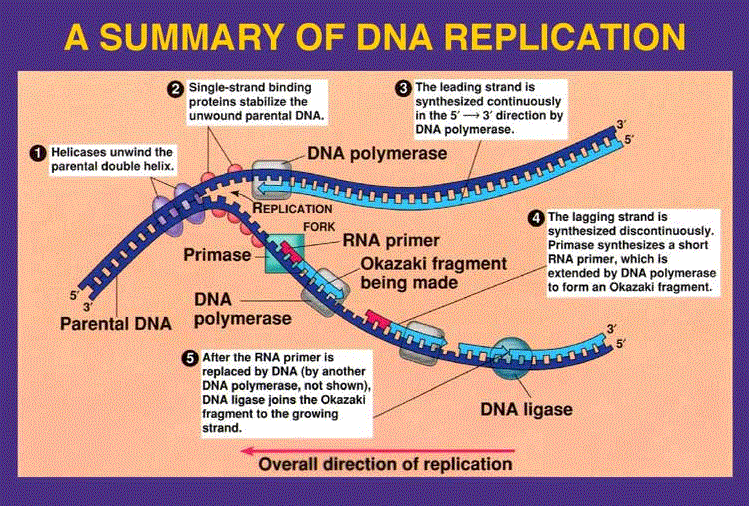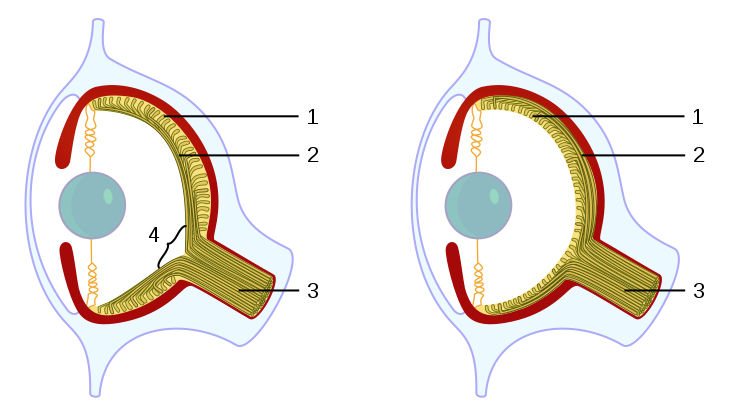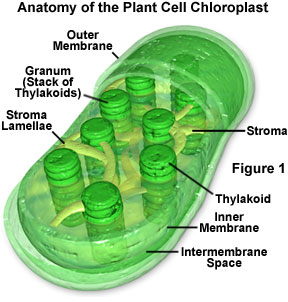Inefficient Respiratory System
It's considered a real achievement and a feat of endurance for a super-fit human, after prolonged training, to climb Mount Everest without oxygen tanks and breathing masks. It was first done as recently as 1978. Everest is a mere 8,848 Metres high. In 1975, a jet flying at a height of 11,264 Metres sucked a griffon vulture into its jet engine.The problem with mammalian lungs like ours is that we draw in fresh air, which mixes with the stale air left in our lungs, trachea, bronchioles and alveoli, so it's already partly stale by the time it gets to the alveoli where gas exchange takes place. We then breathe out as much as we breathed in, leaving a substantial amount behind to contaminate the next intake. Physiologists refer to this as the 'dead space'.
Because of this, we need particularly large bronchioles to shift enough oxygen in and get rid of enough carbon dioxide and, with particularly high demands such as sprinting we can literally run out of breath. Our muscles don't get enough oxygen and burn sugars anaerobically leading to a buildup of lactic acid causing our muscles to fail eventually. The ensuing 'oxygen debt' means we need a prolonged period of recovery from exhaustion as we burn off the excess lactic acid. In short, just when we need it most, our respiratory system can fail and so it imposes a severe limitation on our abilities. Additionally, in order to shift enough oxygen and carbon dioxide across the alveolar membrane into and out of the blood, their lining needs to be very thin and is easily damaged leading to emphysema.
Birds, on the other hand, have a different system. Fresh air not only goes into their lungs on inspiration but into storage sacks too. When they breath out, fresh air from the storage sacks is pushed through the lungs, flushing out all the stale air, so a bird's lungs get fresh air in both phases of their respiration. So, they are able to make do with finer tubes and more robust alveoli and can sustain prolonged effort with little muscle fatigue. In fact, the action of the wing muscles actually increases the rate of respiration without additional effort. Mammals, on the other hand get no special assistance from their locomotory system and need to bring in additional 'accessory' muscles to increase respiration when necessary, imposing yet another demand on the system.
Creationists believe these two systems were intelligently designed by the same designer who appears to have used the worst design for humans. Biologists, on the other hand, point out that evolution is utilitarian and makes do with whatever works, provided each improvement gives some advantage. They also point out that with an evolutionary system based on accumulated small changes over time, and which can't go in reverse, large-scale reorganisations are impossible, so branches in the evolutionary tree of life are often stuck with whatever worked for their ancestors because evolution can't and doesn't plan ahead. Instead evolution often consists of evolving work-arounds for inefficient earlier 'designs' so far as this is possible.
An Inbuilt Mutation Maker
You might expect the system for copying DNA would be about as error-free as possible given the importance of our DNA to us. However, we have four different DNA polymerase enzymes for doing it with, three of which are not very good at it. The best one only makes about one mistake in one million bases copied but the worst can be as error-prone as one mistake in one hundred bases. The reason for this seems to be that to be accurately copied the DNA needs to be fairly perfect already for the enzyme to 'fit' in the right place. The problem with this 'perfectionist' enzyme is that it stops working when it hasn't got a perfect DNA to copy. The ones with a 'near enough is good enough' approach can happily plough on when they are copying mistakes but aren't too worried about adding a few more along the way. So, the tradeoff is between perfect replication which fails to complete the task, leading to cell death, or getting the job done but with mutations.The advantage of this is that at least the cells replicate and repairs and growth get done and things like blood cells get replaced, and, in the case of the immune system, novel mutations are partly how new antibodies get produced. The downside is cancer, genetic defects in children and maybe ageing, about which more later.
It should not be beyond the wit of an intelligent designer to create a perfectionist enzyme which can cope with errors in the DNA it is replicating and to produce antibodies some other way, if indeed an intelligent designer designed the reasons for needing an immune system in the first place. Biologists however, point out the utilitarian and unplanned methods of the evolutionary process and how this process can produce exactly what we can see - a utilitarian DNA replication system, the negative side of which normally only expresses in later life after the genes causing it have been passed on to the next generation, and how it doesn't care if some of the next generation carry defects so long as some get an advantage from it.
Muddled DNA
Similar to the above but to do with how chromosomes swap chunks of DNA when they pair up to be divided in the first stage of egg or sperm production. We have one of each pair from each of our parents so in this stage, bits of our father's DNA can end up on the same chromosome as bits of our mother's DNA and vice versa. The problem is this often goes wrong and one chromosome ends up with two copies of the same gene and the other has none. Some chunks can even end up getting inserted the wrong way round. If the chromosome with the missing gene ends up in a egg or a sperm which results in a new individual, the conception might not be viable, or it can result in a child with a missing gene. Either outcome is unlikely to be an advantage. If the duplicated gene ends up in a new individual, the outcome is far less likely to be detrimental and, in the long term, because one copy is now free to mutate with no loss of function, there will now be increased variability and something for the environment to naturally select.For some reason, primates have unusually high rates of gene duplication and the two with the most are humans, followed closely by chimpanzees. Presumably, creationists would dismiss this as mere coincidence and not indicative of a close relationship, even though a lot of the duplicated genes are common to both.
There would appear to be no reason at all for an intelligent designer to design such an imperfect method for passing DNA on to the next generation and one which can result in children with genetic defects and often a short life expectancy or a severely reduced quality of life and restricted opportunities, although creationists often dismiss this as somehow the fault of the victim and the intended outcome of the all-loving designer because they deserved it.
Evolution, on the other hand, explains it as an uncaring, unplanned, utilitarian process which may give the species an advantage in an environment in which species evolve in response to differential natural selection from variations in the population and where the advantages of evolving evolvability the better to cope with a changing, hostile and selective environment are manifestly obvious.
The Blind Spot
As almost any half-decent creationist fraud will keep pointing out, Darwin said the complexity and apparent perfection of the eye are difficult to explain. What they won't do, however, is tell you he was showing how this is a problem without an evolutionary process to explain it and he then spent several pages explaining in considerable detail how evolution can explain it. Creationist frauds are of course used to misleading people who want to be mislead and for whom even picking up 'Origin of Species' would be regarded as a sin, let alone reading any of it, so they can be fairly confident they'll get away with it with an audience notoriously averse to fact-checking.But the mammalian eye is far from perfect and is actually built the wrong way round. Moreover, the squid eye is far more efficient and evolved much earlier than the vertebrate eye, as are some avian eyes which are even built on the the same basic plan as the mammalian one.
The consequence of being built the wrong way round is that the nerves from the retina, on which the image is focussed, run over the front of the retina so light needs to pass through them. They then have come together to form the optic nerve which must go through the retina resulting in the blind spot. To compensate for that, our brain needs to fill in this area of our vision otherwise we would literally see a black area just off center. In actual fact, our brain makes up what we think we see by 'seeing' whatever is around the missing area.
Try this for yourself. Take a sheet of paper and make a circular blob about the width of your little finger nail in diameter. Now mark an 'X' about 8 cm (3 inches) to the left of it. Now, cover your left eye and move the paper towards you focussing on the 'X' with the blob still to the right of it. The blob will seem to disappear but you will 'see' plain paper. Try it with different coloured or even patterned paper. A significant part of our field of vision is invisible because of our blind spot and a portion of what we 'see' is made up by our brain. And all because our eyes are built the wrong way round. Squid eyes do not have a blind spot because they got eyes built the right way round and there appears to be no good reason why a squid eye design would not work in a mammal.
There is no conceivable explanation for this stupid design in terms of an intelligent designer who had earlier designed the molluscan eye. In terms of evolution however, there is no way a design can be copied from a different branch of the evolutionary tree, so eyes have evolved independently several times, each with a different solution to the same problem. Once the mammalian eye started to evolve, even with the wiring the wrong way round, it would have given it's carrier an advantage. Any attempt to reverse the trend and start again would have involved a loss of function and so would have been quickly eliminated by natural selection.
Apart from that, there is no planning or intelligence in evolution, so no mechanism by which evolution can decide to start again with a better design. Evolution can only work on what is, not on what should be. So mammals are stuck with an imperfect yet adequate eye, 'designed' by an uncaring, unconscious, unintelligent yet inevitable process.
Built-in Self-Destruction
Being built of eukaryotic cells, i.e., complex cells which, over time, have incorporated other prokaryotic cells like bacteria into themselves as organelles with particular functions, we have inherited these organelles on which our cells now depend. One of these is the mitochondrion which carries out the main energy supply function by burning glucose to make adenosine triphosphate (ATP) by adding a third phosphate group to adenosine diphosphate (ADP). ATP is then used to power metabolic processes by releasing some of the energy stored in this phosphate bond and being reduced back ADP and phosphate. The mitochondria brought their own genome with them, most of which has now migrated across into the cell nucleus to become part of our normal DNA, but thirteen essential genes have remained behind and, with mitochondria being essential to us, we are entirely dependant on these thirteen genes.The problem is, the process used to make ATP from sugar, phosphate and ADP in the mitochondria produces highly damaging substances called free radicals which can damage DNA causing mutations to accumulate throughout our lives. These mutations are believed to be the main reason for ageing and may be partly responsible for age-related illnesses such as diabetes and Alzheimer's.
If an intelligent designer intended us to develop age-related illnesses and to have built in senescence then putting the life-support system close to the furnace where it could be damaged and degraded over time was the right way to go about it, otherwise, it can't possibly be described as intelligent. As an evolutionary process however, it produces individuals which have time to breed and pass on these design faults before the faults manifest themselves, and that is all that evolution needs to work. In fact this may even be a long-term benefit to the same genes in the next generation as the senescence and death of the parents, once they have reproduced will free up resources for the next generation. No one ever accused a gene of not being selfish and having scant regard for the welfare of its carrier so long as their utility value has been realised in the form of another generation.
Ineffective Enzyme
This is not strictly a design flaw in humans as such but a flaw in something that, like almost all living things on Earth, we are utterly dependant upon. Probably the most abundant protein on Earth is an enzyme. The reason it is so abundant is that it makes up in quantity what it lacks in quality. It is called ribulose-1,5-bisphosphate carboxylase/oxygenase (RuBisCo for short) and is also the slowest known enzyme. RuBisCo is the enzyme in photosynthesis responsible for taking carbon dioxide (CO2) from the atmosphere and building the chains of carbon in sugars which form the backbone of all organic substances.But RuBisCo is incredibly bad at doing what it does, only carrying out about three reactions a second against tens of thousands of reactions a second for some enzymes. And it makes lots of mistakes. It finds it difficult to tell oxygen molecules (O2) from CO2 and often incorporates it by mistake, causing a chain reaction which causes a loss of carbon and wastes energy. Some plants have evolved mechanisms for reducing these mistakes but they appear to have been evolved several times independently.
Photosynthesis was one of the big steps in evolution when the cyanobacteria evolved this ability to almost literally eat the atmosphere instead of having to eat other organic substances. Some cyanobacteria then got incorporated into eukaryotic cells similarly to the way mitochondria became incorporated and so green plants were able to evolve. This gave life on Earth a huge boost in biomass but produced a toxic atmosphere containing molecular oxygen - the waste product of photosynthesis spat out from the carbon in CO2. This led to the first mass extinction until other bacteria managed to evolve ways of using all this spare oxygen.
And that's probably why RuBisCo makes its frequent mistakes. It evolved in a low oxygen environment where such mistakes were rare and insignificant but it gave its carriers such a huge advantage that the mistake has become fixed. Any tendency to change it would result in something even worse so living things have to make do with what they've got. No planning; no ability to go in reverse, and no one to stand back and think of a better way and start again. The fact that lots of plants have evolved different ways to compensate for RuBisCo's inefficiency shows that it not ideal for purpose. No omnipotent intelligent designer would come up with something which has to be compensated for. Evolution, on the other hand...
Further reading:
- The Unintelligent Designer.
- The Unintelligent Designer - Arms Races.
- Unintelligent Design - The Head Case.
- Unintelligent Design - Forming Alliances.
- Unintelligent Design And Vitamin C Deficiency.
- Creationists Don't Have A Leg To Stand On.
- Ungodly Complexity.
- Unintelligently Designed Brain.
- Evolution. It's Enough To Give You Goosebumps.
- Tasteless Rebuff To Intelligent Design.
- Unintelligent Design.
- Unintelligently Designed Teeth Cause Ray Discomfort.
- Edible Frogs And Unintelligent Design.
'via Blog this'











Shouldn't use the term "evolutionist." It's an insult invented by the Creationuts to imply equivalence between normal people and themselves.
ReplyDeleteHere's another example of unintelligent design: It's estimated that about 80 percent of amputees experience sensations, including warmth, itching, pressure and pain, coming from the missing limb. This phenomenon is known as "phantom limb sensation". The amputee feels the missing limb is still part of his body.
ReplyDeleteOne explanation says the nerves where the limb was severed create new connections to the spinal cord and therefore continue to send signals to the brain as if the missing limb was still there. If so, why didn't God, the Almighty Creator, think of that?
Another possibility is that the brain is "hard-wired" to operate as if the body were fully intact — meaning the brain holds a blueprint of the body with all parts attached. If so, why didn't God, the Almighty Creator, think of that?
Maybe God hates amputees?